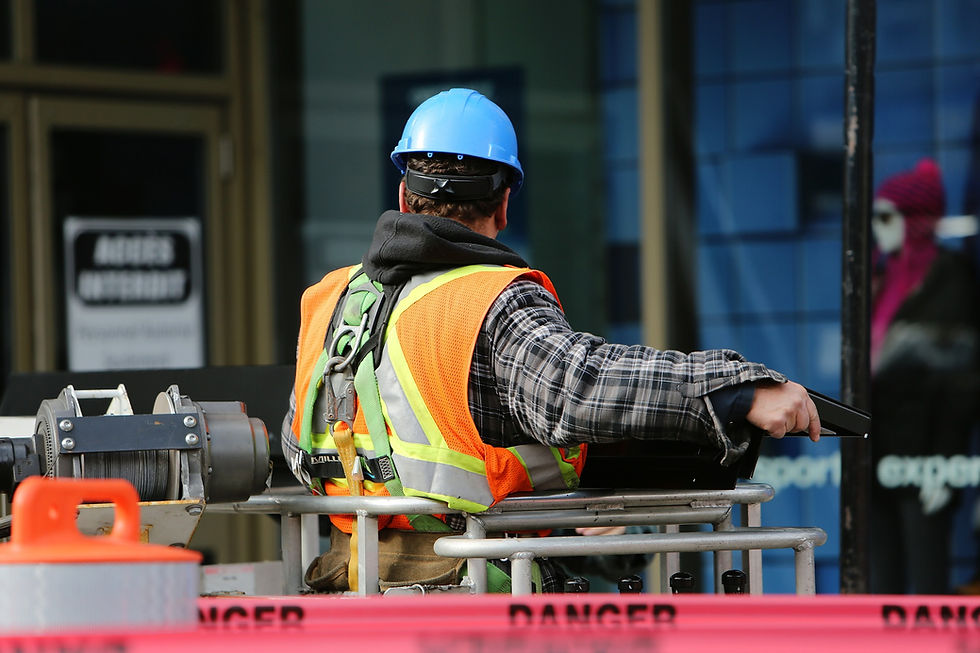Securing Construction Success: The Power of Construction Captive Insurance
- Neil Mathis

- Sep 12, 2023
- 3 min read
Updated: Sep 15, 2023
Blake Martinez and Riley Winchester recently discussed with us, "Securing Construction Success: The Power of Construction Captive Insurance."
In construction, managing risk is a fundamental aspect of every project. One innovative solution is captive insurance. Captives offer a unique opportunity to take control of your risk management strategies with the potential of financial benefits.

What is Construction Captive Insurance?
Captive Insurance is an alternative form of risk financing that typically involves a group of related companies who create their own insurance company, which allows them to retain a portion of the risk associated with their operations instead of solely relying on traditional insurance providers.
Key Advantages of Construction Captive Insurance
Tailored Coverage: One of the primary advantages of captive insurance is the ability to tailor coverage to match the unique risks of the construction industry. Traditional insurance policies often come with generalized terms that may not fully address the specific challenges faced by your construction business. With a captive, companies can craft policies that align with their project types, scale, and risk appetite.
Cost Control: By retaining a portion of the risk, construction companies can gain more control over their insurance cost. Traditional insurance premiums are based on factors that might not accurately reflect a company's risk management efforts. With a captive, companies have the opportunity to benefit financially from successful risk mitigation.
Long-Term Savings: Over time, well-managed captives can lead to substantial cost savings. Instead of paying premiums to third-party insurers, these savings can be reinvested into the captive to cover future claims or even generate investment income.
Risk Management Integration: Construction captives encourage a proactive approach to risk management. Companies that form captives are incentivized to implement strong safety protocols and best practices to reduce the frequency and severity of claims.
Customized Claims Handling: Captives allow for more personalized claims handling processes. Companies can work directly with their captive insurer to ensure that claims are processed efficiently, and decisions are made with a deep understanding of the construction industry's nuances.
Setting Up a Construction Captive:
Feasibility Study: Before diving into a captive insurance venture, construction companies should conduct a feasibility analysis. This involves evaluating their risk profile, financial capabilities, and commitment to risk management. It's crucial to ensure that forming a captive aligns with the company's long-term goals.
Legal Structure: Construction captives can take on various legal structures, such as pure captives, group captives, or association captives. The choice of structure should consider factors like ownership, regulatory requirements, and potential tax implications.
Capitalization: To set up a captive, construction companies need to provide initial capital to cover potential claims. This funding can come from retained earnings, shareholder contributions, or borrowing. A balanced approach to capitalization is essential for the captive's stability.
Risk Management Plan: A robust risk management plan is at the core of a successful captive. Construction companies should establish comprehensive risk control measures that align with industry standards and regulations. This demonstrates to regulators and reinsurers that the captive is committed to responsible risk management.
Regulatory Considerations:
It's important to note that captive insurance is subject to regulatory oversight. Construction companies forming captives must adhere to relevant insurance laws and regulations. Consulting legal and insurance professionals who specialize in captives can help navigate the complex regulatory landscape.
In conclusion, construction captive insurance presents an enticing alternative to traditional risk management strategies. With its potential for tailored coverage, cost control, long-term savings, and risk management integration, captives can empower construction companies to take control of their risk landscape. However, establishing and managing a captive requires careful planning, commitment to risk management, and adherence to regulatory guidelines.
As the construction industry continues to evolve, captives offer a forward-thinking approach that aligns with the sector's dynamic nature. By leveraging the benefits of captive insurance, construction companies can pave the way for a more resilient and financially sound future.

Blake Martinez, CPCU, AFSB
VP/ Shareholder
504-756-3401
New Orleans Office
Blake Martinez is a Producer at Ross & Yerger on the construction team. Martinez specializes in commercial insurance, captives, surety bonds, construction, and financial strategy.

Riley Winchester, AAI, CLCS
VP/Shareholder
601-968-0244
Hattiesburg Office
Riley Winchester is a Producer at Ross & Yerger on the construction team. Winchester specializes in oil & gas, construction, offshore, captives, and group benefits.
ABOUT ROSS & YERGER
Ross & Yerger – one of the largest independent, privately-held insurance agencies in the Southeast – was established in 1860 and is headquartered in Jackson, MS. The firm has 127 employees throughout their five offices in Jackson, Tupelo, Hattiesburg, New Orleans, and Memphis. Ross & Yerger is licensed in all 50 states and offers a full range of brokerage services, including insurance, employee benefits, bonds, financial services, and risk management consulting. For more about Ross & Yerger, visit www.rossandyerger.com.




Comments